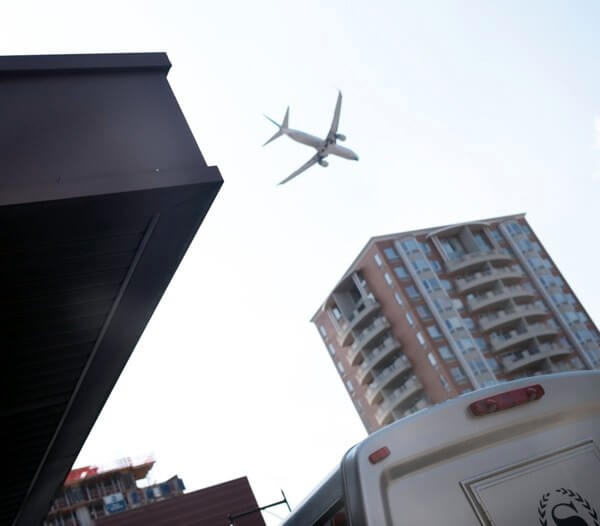By Mark Hallum
The LaGuardia Airport committee meeting at the Adria Hotel in Bayside on Jan. 25 brought one civic leader’s report that the Federal Aviation Administration may have overlooked rules pertaining to historic districts when creating flight patterns over northeast Queens.
Maria Becce, retired vice president of the Broadway-Flushing Homeowners Association and current member, said she had corresponded with officials in Washington about a 1966 law protecting historic places and Native American reservations from environmental impacts of airplane noise.
The Broadway-Flushing Historic District, established in 2006, protects the integrity of about 1,300 buildings on the National Register of Historic Places that have stood for more than a century. The neighborhood now sits below the NextGen flight pattern, enacted in 2012, particularly the TNNIS climb for commercial aircraft departing from LaGuardia.
According to a letter issued in November from the Advisory Council on Historic Preservation, part of the Office of Federal Agency Programs, to Katherine Andrus, the FAA’s federal preservation officer, stating the agency had issued a categorical exclusion, or CATEX, under the Historic Preservation Act which the FAA seemed to falsely believe gave it immunity from complying with Section 106, which calls for additional studies pertaining to historic districts, the letter stated.
“Issuance of a CATEX is irrelevant to a federal agency’s compliance with Section 106… [which] is an independent statutory requirement and compliance with [National Environmental Policy Act] through a CATEX does not satisfy an agency’s obligations under Section 106 of the NHPA,” the letter stated. “In conclusion, ACHP requests that FAA reanalyze and address the auditory effects of the undertaking on the Broadway-Flushing HD and associated community and continue to respond to these public inquiries related to air traffic noise.”
Becce asked FAA officials at the meeting about the status of the analysis and said she would request elected officials in Queens to follow up the FAA’s progress in studying the effects of the flight patterns over Broadway-Flushing.
Andrew Brooks of the FAA, addressing the matter of the CATEX, said the specific characteristics of the historic district need to be evaluated
“If noise was not necessarily a criteria for listing and there was an increase in noise, it still would not be considered a potential effect to a historic resource because noise was not a contributing factor to its listing,” Brooks said. “I’m not saying that’s the case; I’m just saying there’s a potential there as well. I’m not familiar with what the original factors that went into its listing, so that’s something we would have to look at going forward.”
Becce said the age of the homes and the secluded nature of the neighborhood were two of the reasons for the official recognition 12 years ago.
“Within the city of New York,” Becce said, “we find essentially an oasis of a suburban neighborhood of single-family homes, 95 percent of which are a century old, that were designed to be an open space within the confines of a very, very noisy metropolis. … That was recognized along with the type architecture, age and style of the homes.”
Correction: an earlier version of this story identified Maria Becce as Vice President of the Broadway-Flushing Homeowners Association. She retired in September 2017, but remains a member.
Reach reporter Mark Hallum by e-mail at mhall



































